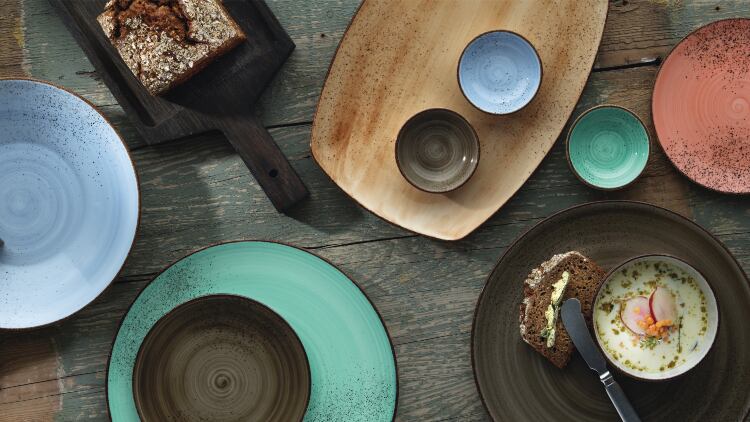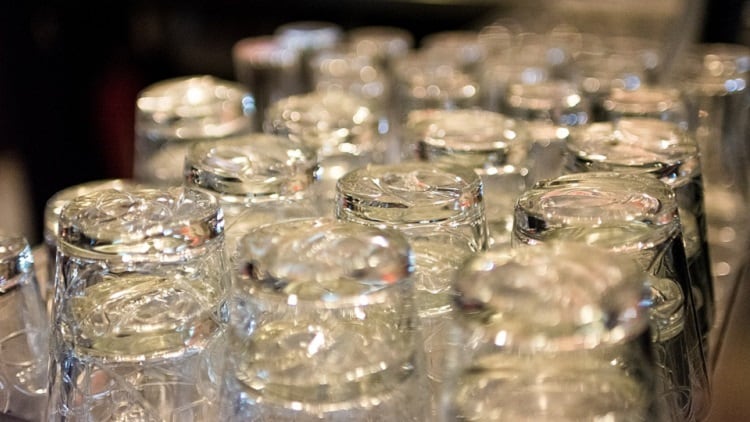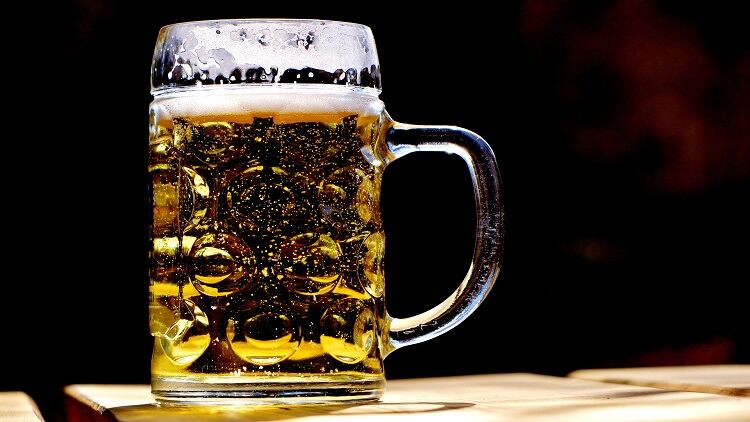Going out for something to eat these days is, increasingly, about the experience – ideally an experience that can be shared on social media.
While it might faintly annoy you that people start snapping away with their smartphones as soon as the food arrives, rather than tucking in, it’s a fantastic marketing opportunity for your pub.
And who knows, if your dishes look good as well as taste good, your customers might even start talking to their friends about it in the analogue world.
That decisive Instagram moment is driving operators to think a lot harder about tableware and the way their dishes are presented.
Green dining
So you think about your food miles, vegan options and sustainable sourcing, but how about the dishes the food is served on?
“Sustainability and recycling are hot topics this year,” declares Rob Blunderfield of Parsley in Time, which offers tableware for light bites and snacks produced from palm leaves that have fallen naturally from trees before being pressed into shape. “They’re free from chemicals, completely compostable, durable and robust too”.
The firm also supplies Bagasse plates and bowls made from recycled sugar cane fibre. “They are microwave and dishwasher safe, and a sturdier option than paper.”
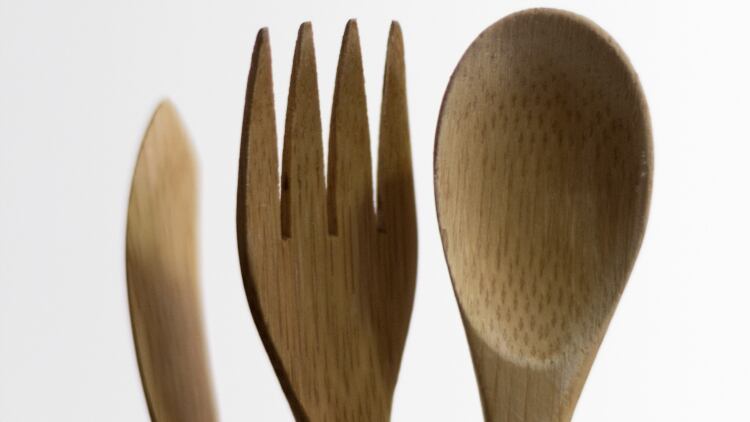
Instagram presence
According to David DiGioacchino, customer proposition manager at catering supplies firm Nisbets, “the average 18 to 35-year-old spends five days a year browsing food images on Instagram, and 30% of them would avoid a restaurant with a weak Instagram presence.
“To create dishes that are ‘Instagrammable’, and cry out to be snapped and shared, is a must.
“The colour, material and texture of crockery play an integral role in how ‘shareable’ a dish is. Tableware needs to be inventive, eye-catching and, most importantly, work with whatever is plated on it for a dish to truly stand out.”
Cutlery box
“It never ceases to amaze me,” says Brakes’ Antony Chaplain, “that so many operators are prepared to invest significant amounts of money in crockery but next to nothing on cutlery.
“You can tell a lot about the overall experience you’re likely to receive at a pub from the cutlery and we see many pubs where it’s cheap, dated or, worse, a mixture of old and new designs.”
Changing your entire stock of cutlery will cost you, of course, but it could be worth it. And it will give you the chance to be a bit adventurous with your knives and forks.
Some operators are getting “bored of standard cutlery”, says Alliance’s Chris Hatton. “They are choosing designs influenced by the venue’s décor – gloss black or gold for more high-end contemporary dining, stonewashed for casual dining.
“And we have some very nice patterned cutlery with an embossed handle to complement the plate.”
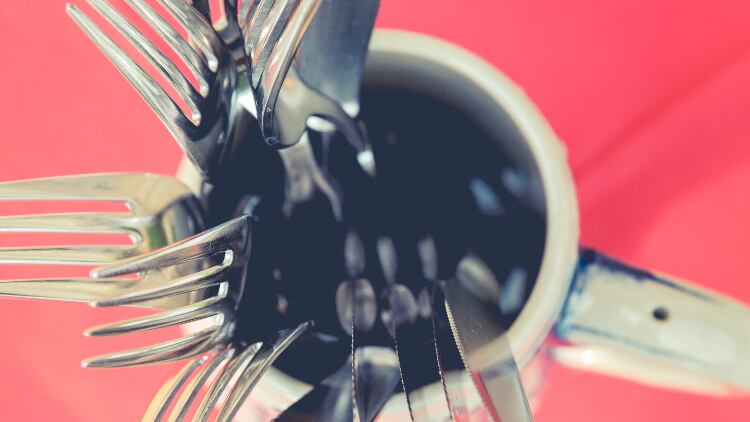
Comprehensive range
Trends in food and tableware converge. The growth in exotic styles of cuisine and sharing dishes that many pubs are tapping into demands its own crockery.
As Antony Ward, brand manager at Hendi, points out, this requires “a comprehensive range of products with different diameters and depths”.
“This is especially true of bowls. Once a 10oz bowl was acceptable but now operators desire as little as 5oz for tasting menus or tapas-style dining.
“Gone are the days when restaurant crockery was all the same style or range – it’s now about a mix of different styles to create an eclectic mix.”
Brakes national account manager Antony Chaplain describes sharing as “an influence right across the menu from starters to desserts. Whether it’s slate, melamine, wood or ceramic, sharing platters are in.
“Interestingly, where these were once round in shape the trend is currently towards rectangular,” he adds, citing M&B’s Miller & Carter chain’s Meat Tasting Board as an example.
And where there’s a sharing platter, there’s also a need for side plates – preferably matching.
Modern opulence
A related food trend is small dish dining – “tapas, but not necessarily Spanish,” says Chris Hatton, sales forecaster at catering equipment wholesaler Alliance, which has just launched a new range of such crockery.
Hatton has also noticed pubs are now considering “the entire atmosphere” of their venues when choosing tableware.
“Over the past 12 months, we’ve seen operators buying into a concept. Last year it was an urban industrial revolution theme with an earthy feel and colours, and now there’s an interest in modern opulence, driven by moneyed young people who are Instagram-dining and attracted by the excessively decadent.”
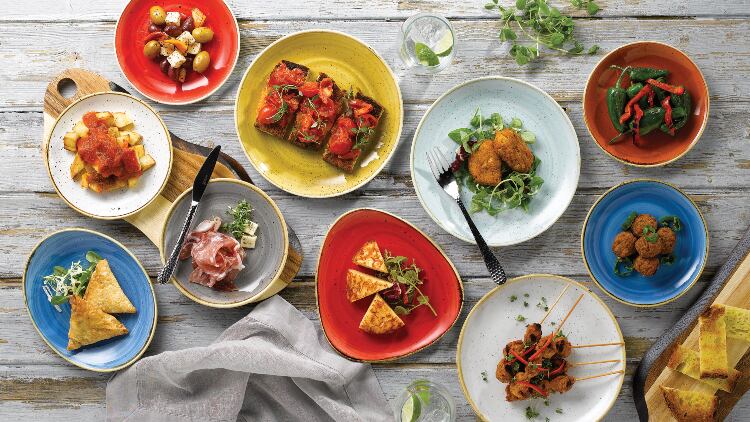
Surge in colourware
Chaplain agrees about the “trend towards ‘industrial’ themes, a lot of wood and metal”.
“This is particularly true in relation to table furniture such as condiment caddies, cruet sets and containers for side portions where we’re seeing extensive use of copper and other metals, often with a distressed or hammered finish.
“We’re also witnessing a surge in colourware,” he continues. “Traditional British crockery tends to have a white bottom with a patterned top surface but this is now giving way to crockery that has a colour or pattern both top and bottom.
“Where white is still being used, it is enhanced by a very subtle pattern or a grained, textured or embossed finish.”
For Kathryn Oldershaw, marketing director at Utopia, delivery of the ‘wow’ factor has seen “the evolution of duo-tones and gradients of colour, warm and moody palettes and breathtaking shapes”.
“Imagination is the name of the game. The days of venues buying one style of plate in a couple of sizes is over. The market demands shapes and colours that create interest and drama and can easily be matched to a venue’s branding.”
We really do want plates
Social media’s ‘We Want Plates’ backlash against pubs serving dishes on wooden boards, slates, and dustbin lids seems to be having an effect.
Brakes’ Antony Chaplain is seeing “a resurgence in ceramics” partly as a result of concerns about food safety surrounding alternative materials.
Rob Blunderfield of Parsley in Time agrees: “There has been a swing from table theatre to a more conventional style as diners look for pubs and bars to serve their food on an actual plate. Maybe it’s gone too far!”
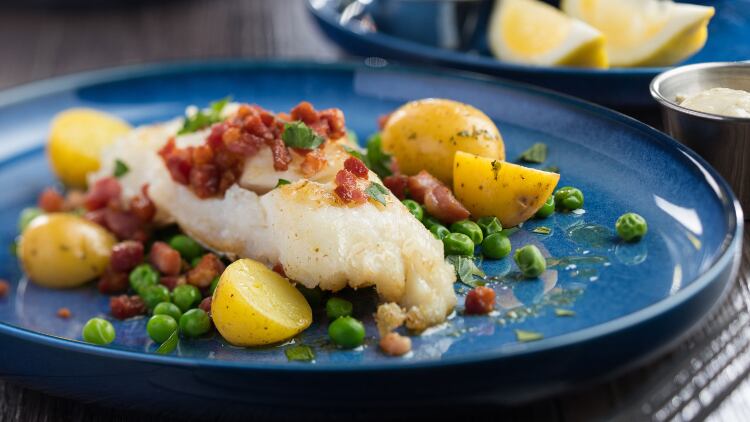
Depth and warmth
Utopia’s new Raw range, for instance, contrasts two colours and textures “to bring depth and warmth to the table”. Artis marketing manager Gill Head detects a more subtle shift away from white towards “splashes of colour and texture”.
“Statement plates are big news,” she adds. “Our Purity Pearls design combines textures and metallic effects with a distinctively tactile raised relief pattern.
“Although it has a modern feel, it’s dignified and stylish” and, she notes, is also durable, an important consideration in any busy pub. Nor is plain white quite dead yet.
“No colour sets off a chef ’s signature dishes in quite the same way,” argues Rob Blunderfield, marketing manager at Parsley in Time. “And, this year, white tableware is available in an unprecedented number of shapes – triangular, square, oval, oblong, ‘organic’ round or straight round, deep rimmed or shallow. It’s available in a variety of finishes and textures too.”

